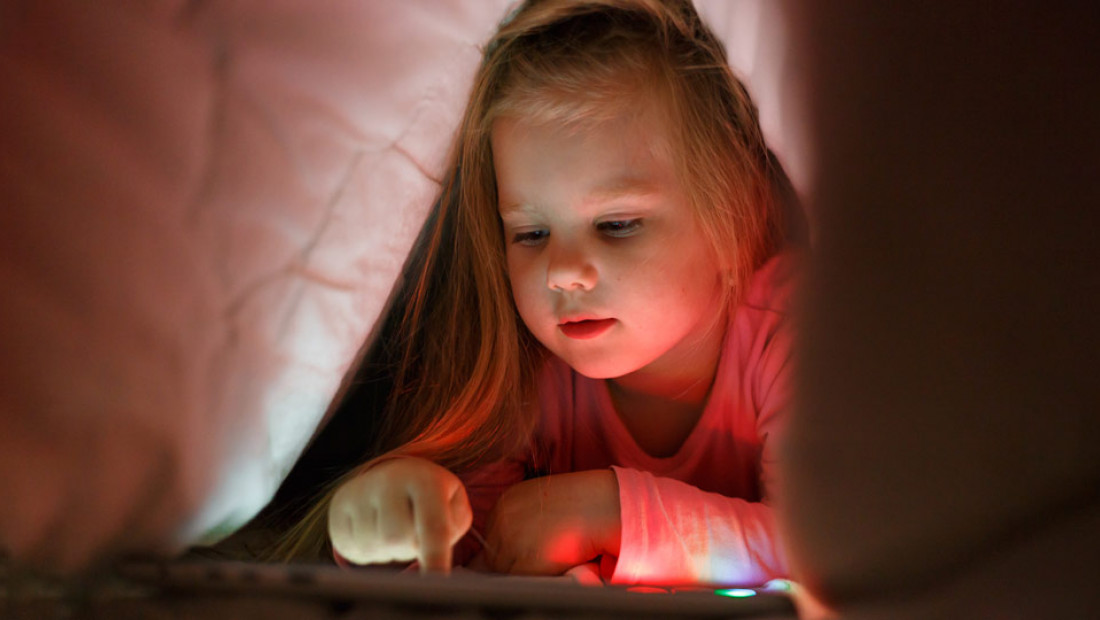
Kindergartners from low-income families spent more than six hours a day in front of screens during two early months of the COVID-19 pandemic, a small Ohio study suggests.
That is nearly double the screen time found before the pandemic in similar children, according to other research.
Caregivers from low-income households may have faced more difficulties than those from more advantaged families in managing the time their children spent watching TV and using computers, phones and tablets when child care was shut down, according to the researchers.
Still, the results are concerning, said Rebecca Dore, lead author of the study and senior research associate at The Ohio State University’s Crane Center for Early Childhood Research and Policy.

“We found a high level of media use compared to what many experts think is appropriate for this age group,” Dore said.
“Some of that time spent using media was positive: watching educational videos and connecting with friends and family. But the amount of time they spent is something we should be aware of.”
Dore conducted the research with Ohio State colleagues Kelly Purtell, associate professor of human sciences, and Laura Justice, professor of educational studies and executive director of The Crane Center.
The study was published online recently in the Journal of Developmental & Behavioral Pediatrics.
The study involved 151 low-income caregivers of kindergartners in Ohio who completed online questionnaires between May 1 and June 30, 2020, as part of a larger study.
Caregivers responded to 12 questions assessing children’s media use on the most recent weekday and weekend day. Media use included any kind of video, including television, movies or short clips on any electronic device, and using apps or games on any type of device.
Results showed that children averaged 6.6 hours a day of media use. Contrary to previous research, weekday use (6.8 hours) was higher than weekend media use (5.8 hours).
“That suggests parents might have been using media as a substitute for the time their children would have been spending in some type of child care that was closed because of the pandemic,” Dore said.
“Increased screen time may be particularly concerning for children from low-income households who had higher levels even before the pandemic: over 3 and a half hours per day compared with less than 2 hours for children from high-income homes.”
Remote schooling didn’t seem to be the main reason driving the results. Findings showed 84% of children had direct contact with their teachers once a week or less, with 53% reporting no direct contact.
Still, 61% of caregivers reported their child was using media for learning more than usual, perhaps watching educational TV or using educational apps unrelated to formal schooling. Also, 47% reported increased entertainment use, 45% said there was more use as a way to occupy the child’s time, 42% reported increased use for maintaining relationships with remote family and friends, and 34% said their child was spending more time using screens for family bonding.
“Importantly, we saw increases in media use in a lot of areas often condidered positive, such as learning and fostering friendships, suggesting that caregivers may have been using media to supplement children’s educational and social experiences at a time when in-person options were not safe,” Justice said.
“But these families don’t have some of the resources that more advantaged families have to help with children while the parents work or do other things. For low-income families, occupying a child’s time may also be very important and necessary at times.”
Results showed that children living in families with more kids had higher levels of screen time, potentially reflecting the pressures that caregivers have with larger families, Dore said.
Girls in the study spent more time than boys did using media to connect with family and friends. Dore said caregivers should be encouraged to provide more support to boys in maintaining relationships through technology when they can’t meet in person.
It is not clear whether the high levels of media use found in this study would also be found in higher-income families.
“Other reports would suggest children from all backgrounds had higher media use during this time,” Dore said.
“But use may be even higher in lower-income families because they are less likely to have flexibility to manage children’s activities during work hours or be able to afford other child care options.”




